“She is a true beauty!”, those were my first words as I finally stopped in front of BIBI, a spotless Rustler 36, moored right at the end of the long pontoon in Les Sables d´Olonne. Her skipper, Andrea Lodolo, had invited me to come and see her and it was a no-brainer to identify her: Not many boats these days are rigged Solent-style, even lesser bear those classic lines. BIBI is a huge box of chocolates stuffed with everything you´d need for a serious circumnavigation.
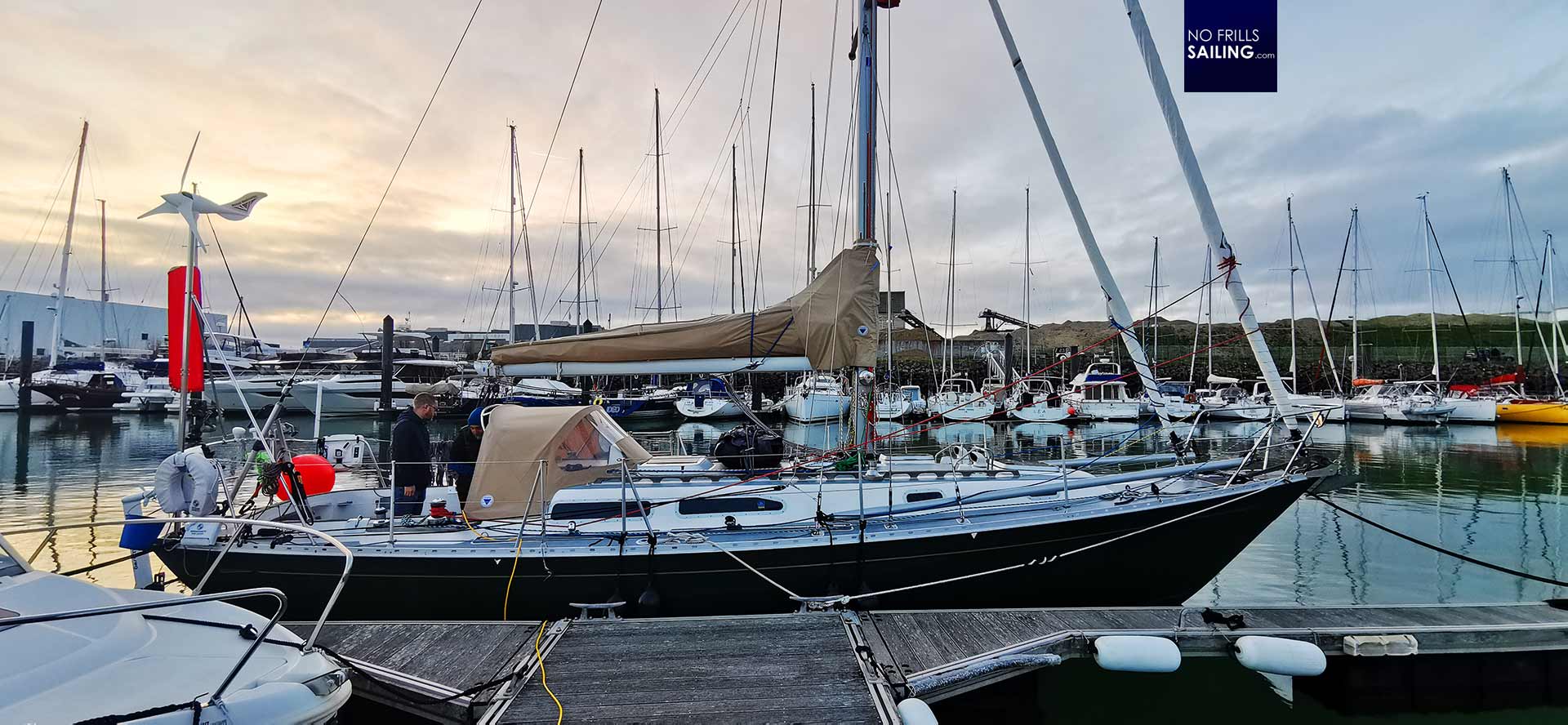
The boat has recently been completely re-furbished by the Rustler shipyard in Falmouth with her skipper sparing no cost to have the boat structurally and visually brought to a “near new” state. Various partners had installed surplus equipment on the boat needed for long passage sailing, more than that, needed for solo-sailing long passages. Andrea Lodolo is listed as skipper participating in the upcoming Golden Globe Race of 2026. For the first of my articles on BIBI and her skipper, I picked one particular detail which I always wanted to write about: The mechanical self-steering windvane. Andrea agreed to demonstrate the basic functions, so here we go …
Pros and cons of a self-steering windvane
First of all, the advantages of having a mechanical self-steering aboard are clear: No energy or fuel consumption, operation in a 24/7-mode for weeks and even months is no problem. With the systems perfected over decades with hundreds of sailors and literally millions of nautical miles experience, these systems are rugged and refined. With as less parts as possible and those parts all virtually repairable and replacable, those systems are near fail-safe. In the Golden Globe Race, of course, where only AIS is a concession to modern times, the windvane is an absolute essential part of the boat. Andrea Lodolo went for the Canadian brand Hydrovane.
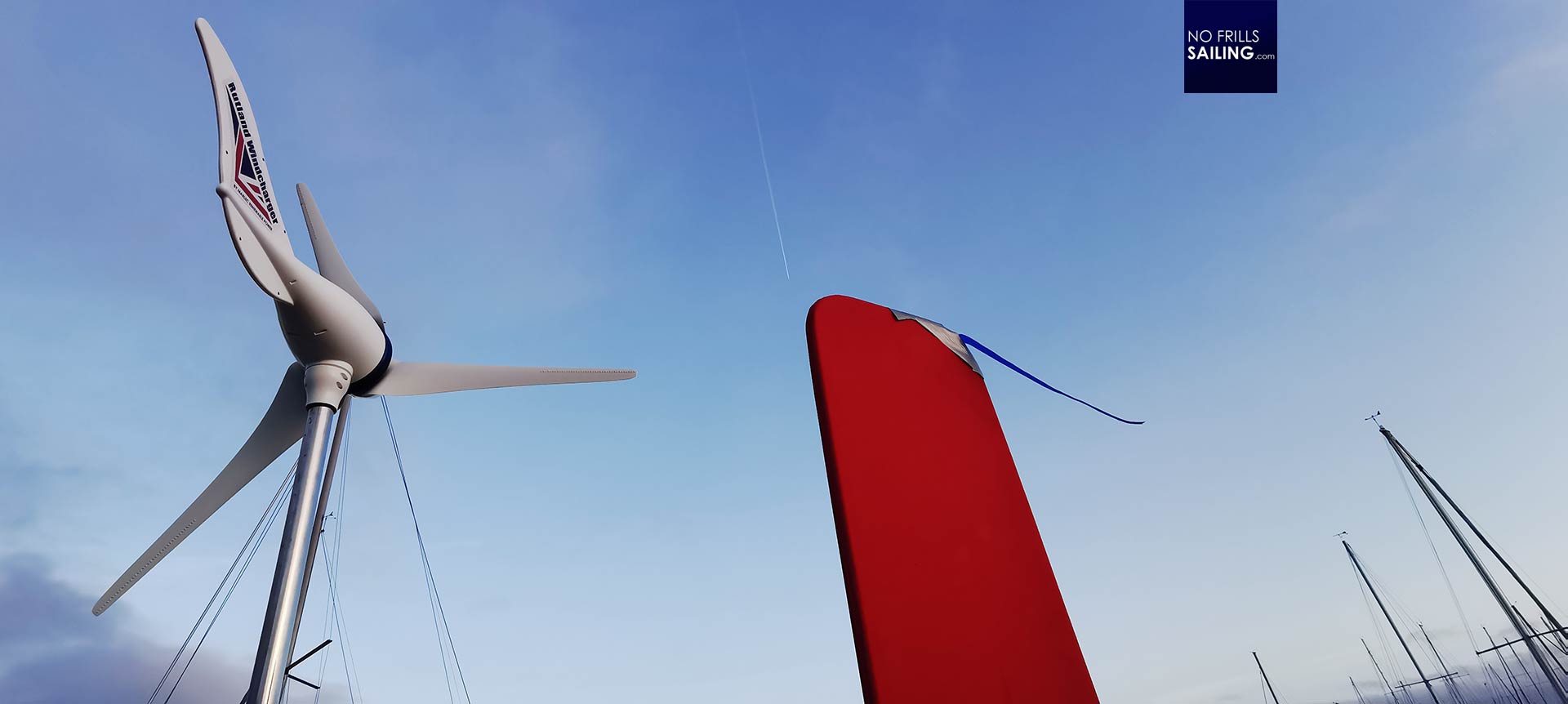
There are not many cons regarding this system. One is that the installation of this system kind of “ruins” the clean and neat lines of a boat. The frame and the vane itself is huge: An electric or hydraulic autopilot of course is “hidden” and won´t alter the outward appearance of a boat. Nevertheless, think the other way around, with a windvane your boat will look like a “real” go anyway boat. Secondly, the windvane inherently can only steer a certain course relative to the wind-angle. It will change course accordingly when the wind shifts – later more on that. So, Andrea, show us how the Hydrovane is “activated”.
How it works: Setting up the Hydrovane
I was surprised how easy and fast this system is indeed ready to go. There are two pins which have to be removed, just like in a aeroplane. When this is done, both the windvane itself and the attached rudder down in the water are free to rotate and move. Andrea tells me that these pins are essential and that he secures them thoroughly and has a total of four spare pins for his adventure.
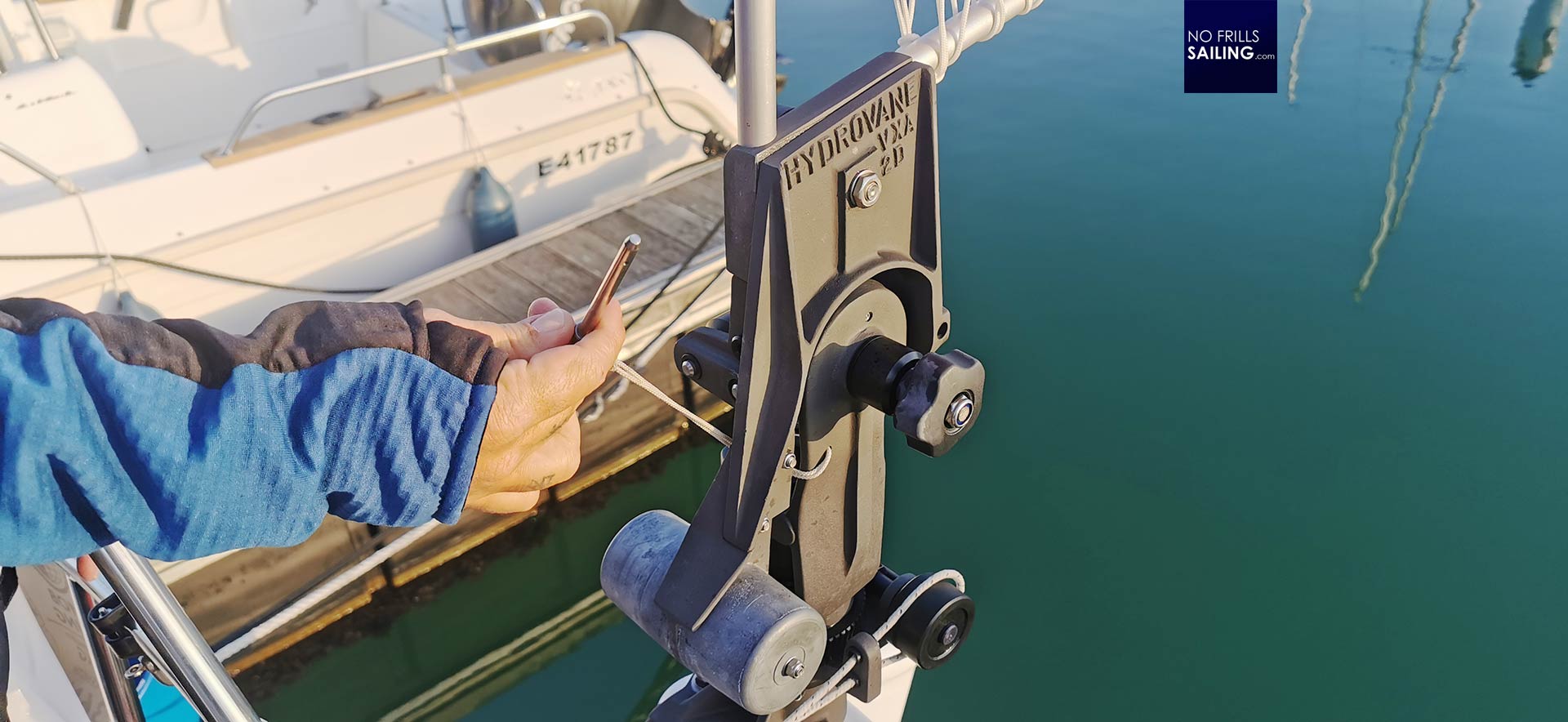
The second step was very hard to take a picture of, because words in this matter describe it better: Relative to the wind-direction and the desired course to this wind, the vane must be adjusted. So first the boat is put to the course the skipper wants to steer. Now the windvane, by rotating it, is set to be facing the wind direction in exactly the same angle the wind hits the boat from aside. That´s basically it …
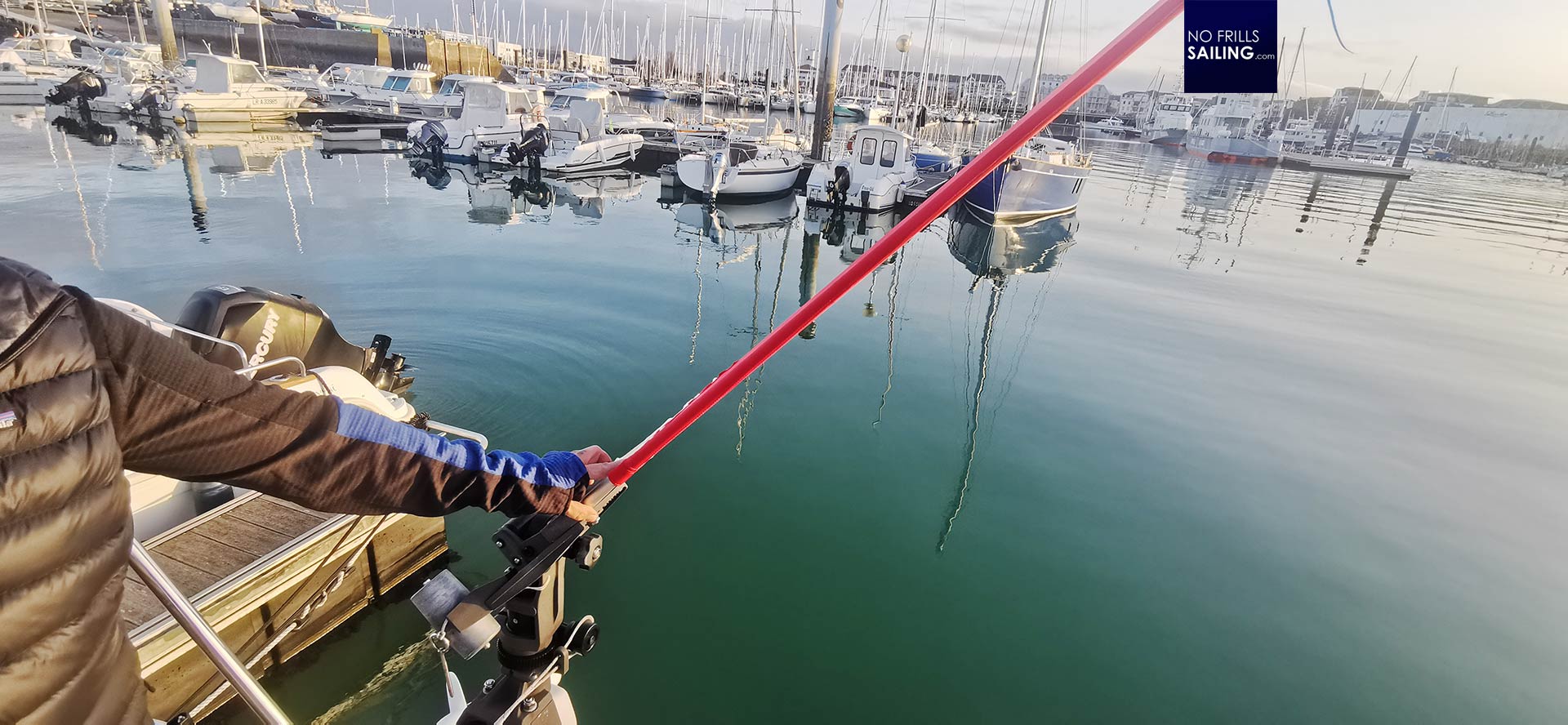
Andrea now demonstrates what happens, when the boat – driven by currents or waves – veers off course. Then the angle of the wind hits the vane from either the right or the left hand side. It then pushes the wind vane to either of those two sides agains a small counterweight that sits beneath the pivot of the vane. When this happens, the left-right swinging movement of the windvane is translated into the rotation of a cogwheel. This cogwheel, in a 45-degree-angle, is connected to another corresponding cogwheel that sits on top of what is basically the rudder shaft. The turning of those wheels makes the shaft turn, thus giving a rudder impulse making the boat turn.
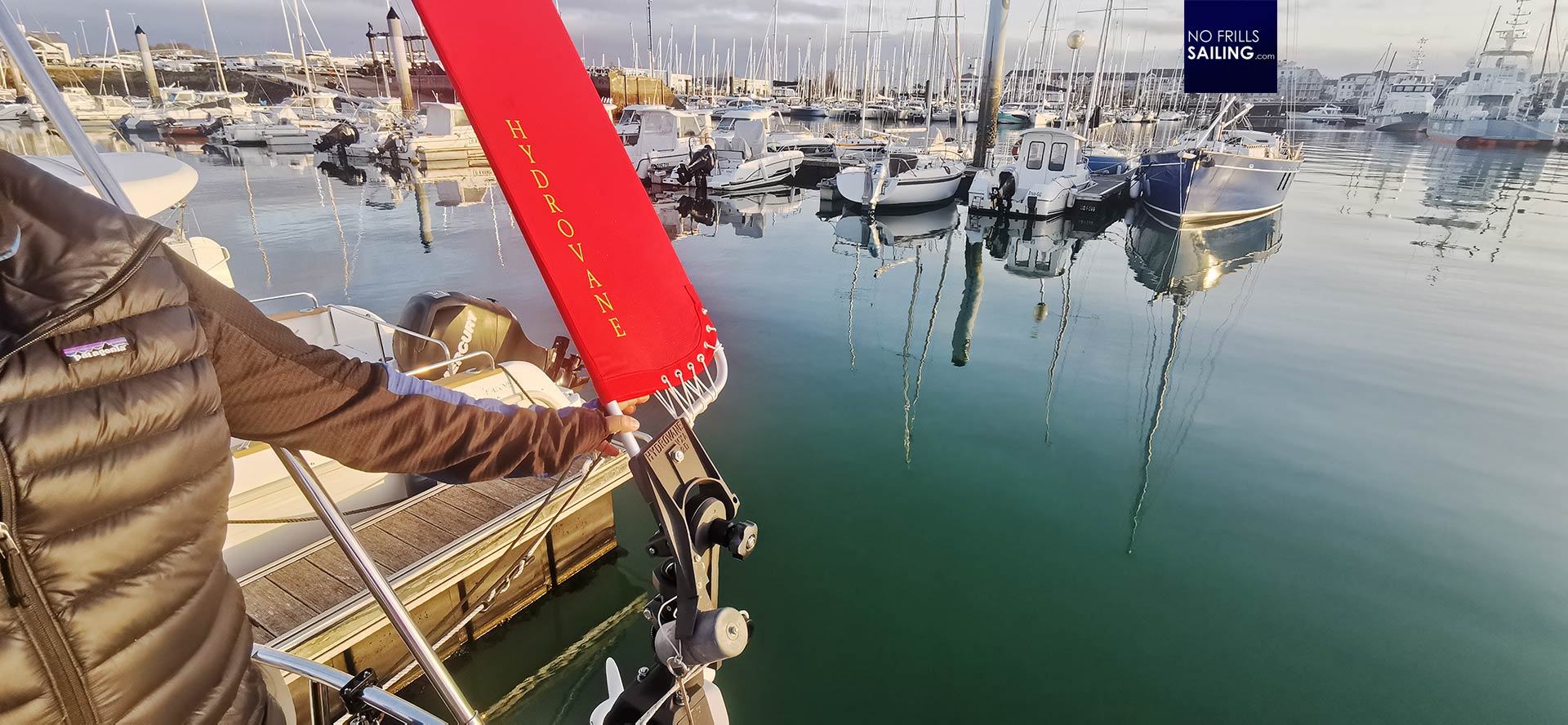
Because this simple “gear” is set up in a way that a veering off to starboard will result in a ruder impulse to port side, the boat will counter the initial course change until the wind vane is again dead in the wind: Hence no more swinging, no rudder, midship back on the old course. In reality the boat, depending on the swell and the severity of its own weather helm, will follow a “snake” course of luffing and bearing away from the actual course. A phenomenon electric or hydraulic systems have as well. The Hydrovane is so simple that the whole demonstration lasted no longer than two minutes. Of course, Andrea has trained a lot and certainly there are details and fine tuning tricks, but I was astonished of how conveniently easy it all works.
Pro-tipp: Quick reaction/mechanical remote control
Rather interesting was a detail he showed to me, I never had heard of in the first place regarding the self-steering windvane: A quick reaction-setup and in a way also a “remote control” for the wind vane. He said that in severe weather with very high waves it can be dangerous to haul oneself out over the aft coamings to re-adjust the angle of the vane when needed. Also, when a sudden hefty change in wind direction or a gust demands a quick turning of the adjusting wheel.
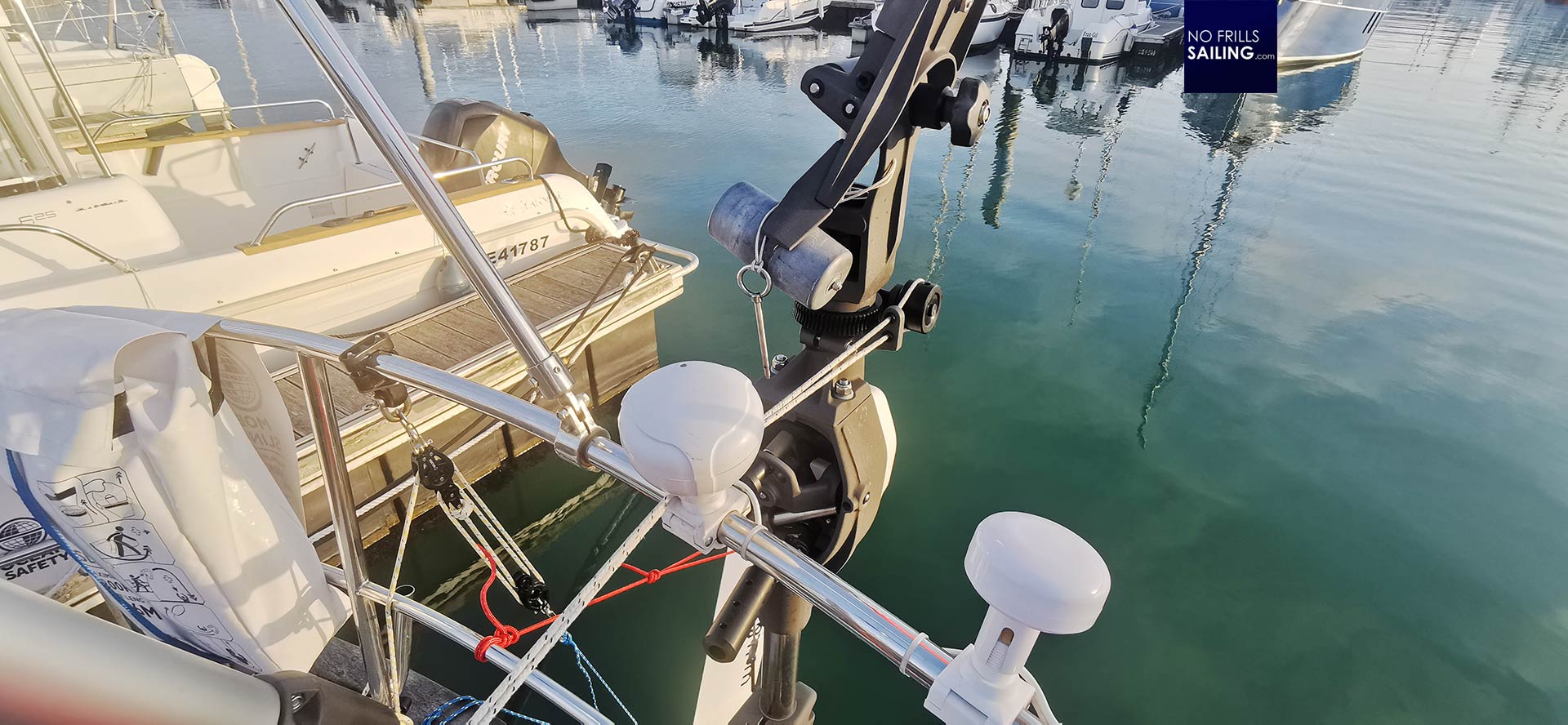
For this, there is a separate wheel and an endless loop-line connected to it. This has exactly the length of the cockpit. By means of a clip and a rubber band this band is strapped to one of the cleats next to the entryway and thus put under tension. Now, because this is a loop, Andrea can pull either one of those two lines, making the wheel at the end of the boat turn either left or right.
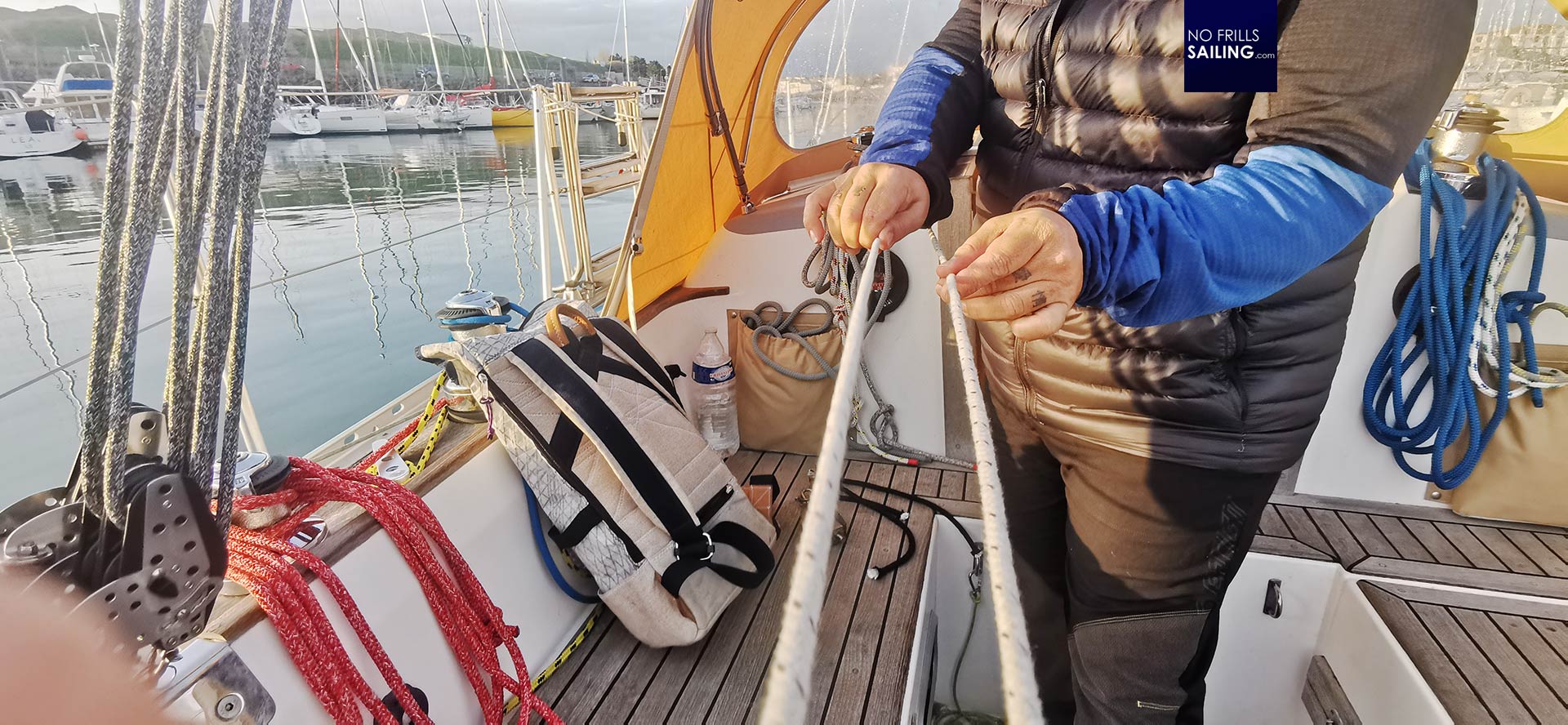
In doing so, he can make the vane turn into the wind very fast, hopefully before the gust of the windshift will make his boat turn and – by chance – turn into the waves which can cause serious trouble. Also, in shitty weather, he can sit there underneath his soon to be installed dodger to fine-tune the angle of the windvane as well. A pretty neat solution and again, wonderfully easy.
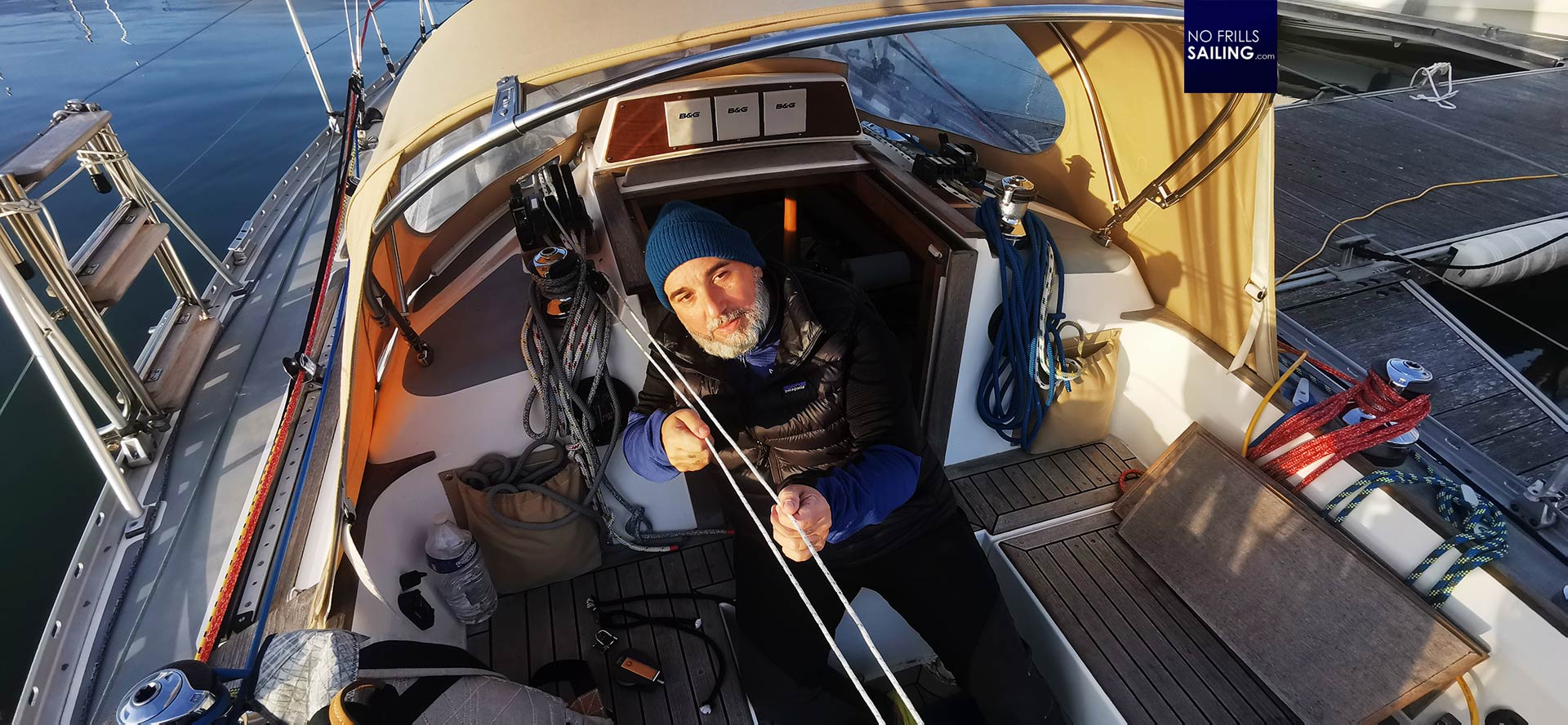
I can only imaging the harsh reality of the roaring forties and I cannot comprehend what it can be like in the furious Fifties, but I am sure that this system is increasing the safety for Andrea and all the other skippers using the Hydrovane manyfold.
Speaking of safety …
I remember talking to Golden Globe Race finisher Istvan Koper who circumvented the Earth in his boat in 2018/19, he told me that his windvane (it was a different brand than Andrea´s self-steering) broke pretty early on in the race. So I ask Andrea about his feelings regarding the rigidity of his self-steering, repairability and spare parts. Of course, he says, thinks can break – more so in the face of one of the most remote and violent places BIBI is going to sail, but tries to be prepared.
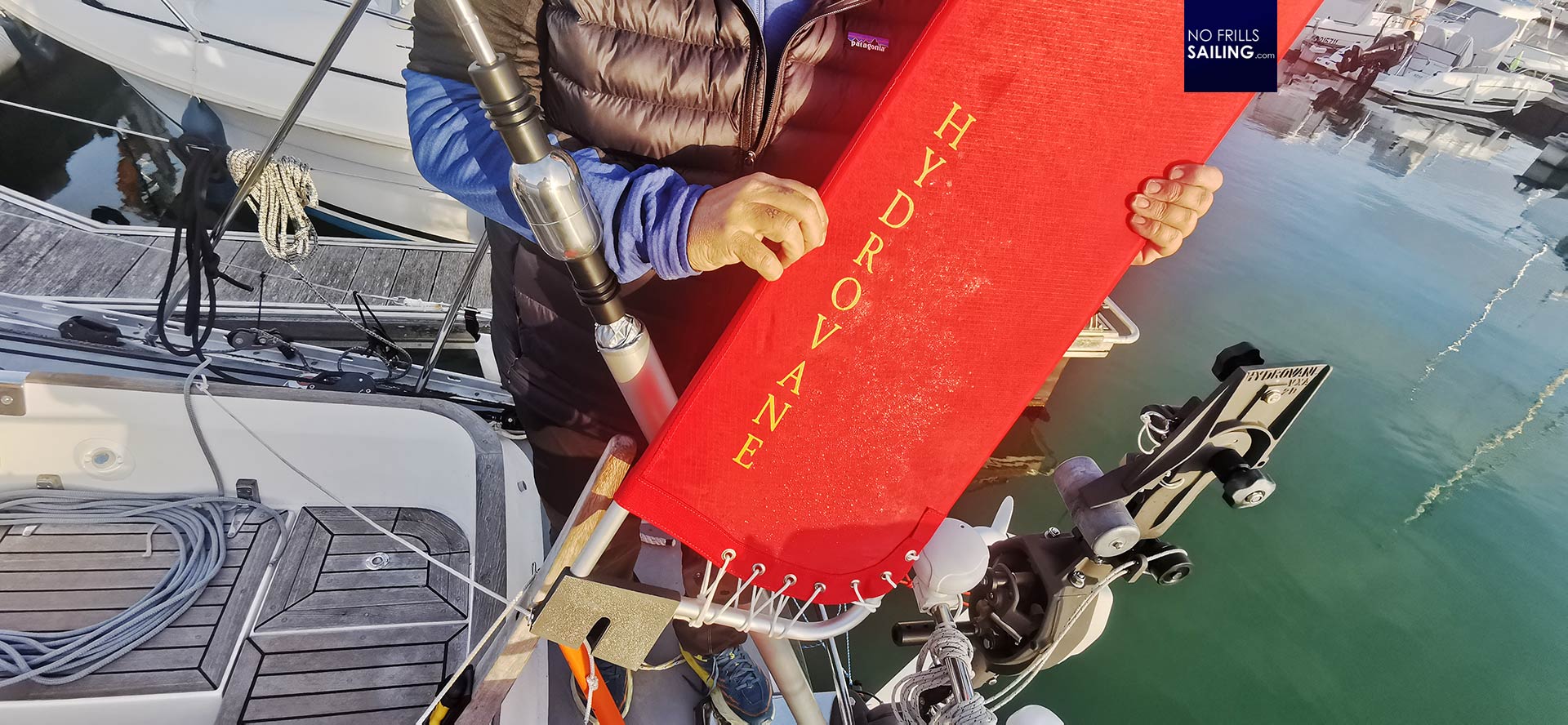
For that, he carries a complete spare vane frame in case all too violent gusts or turns will beak the aluminium frame. Also, he has a spare vane canvas that is to span onto the frame itself. Being a canvas, those of course can rip apart or get punctured. To me the whole mechanism, albeit being surprisingly nimble and quickly reacting (there is very little force needed to turn the rudder) made quite a rigid impression.
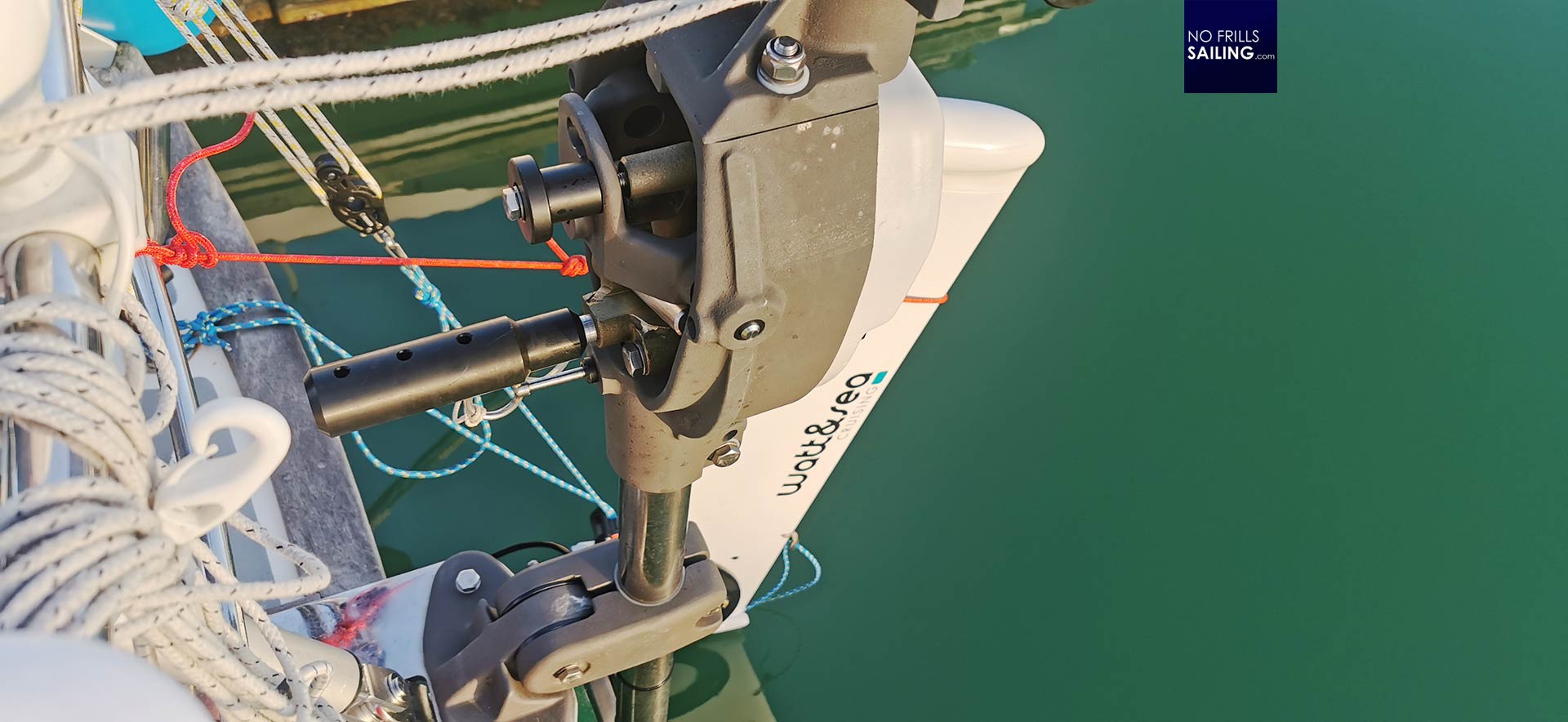
Lastly, Andrea pointed to an extension on the rudder shaft of the mechanism: This is where an emergency tiller could be mounted very quickly and easily. The Rustler 36 is a long keeled classic full-displacement yacht, very stable, very seaworthy and one of the handful of choices most GGR participants opted for. A long, very thick rudder and a solid tiller – I can´t imagine anything that could break this, not even a “playful” Orca. But it´s certainly good to have a fallback.
So much more to explore
Two guys jump aboard the boat, in the meantime the Les Sables autumn sun stands a bit higher, illuminating this unusually warm and calm mid-November morning in a golden shine. Andrea begs himself off, to brief one of the guys for further installations on BIBI. The second one turns out to be his sailing mate, today both are going to test the new inflatable dinghy. Andrea´s Rustler 36 is equipped already with anything a skipper might wish for his journey. In preparation for the Golden Globe Race, Andrea is going to sail her during the winter right here in Les Sables d´Olonne, where the rough Atlantic Seas finally smash against Europe after being stirred up on their way over the ocean. He invites me for a follow up – so much more to see, so many details to write about.
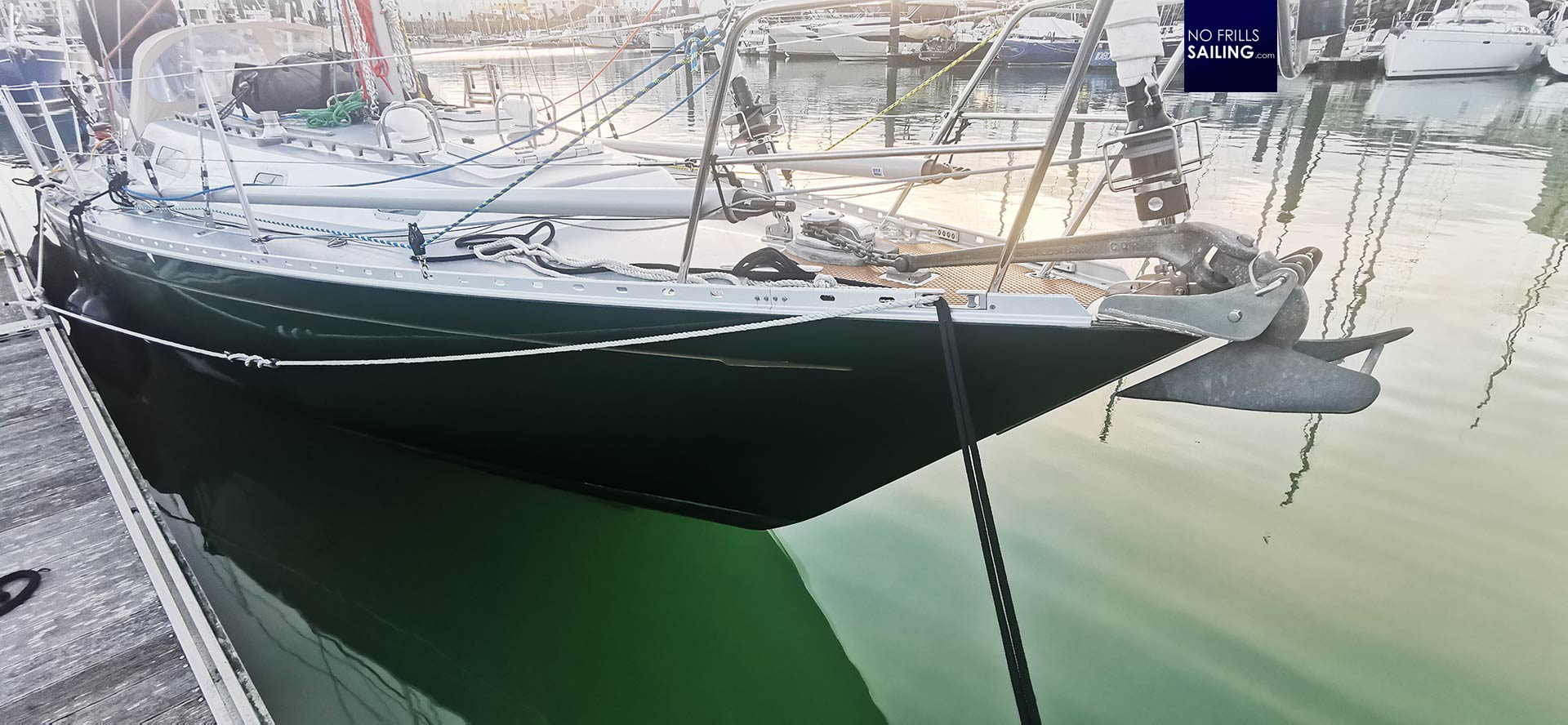
Seldom have I met a guy so determined, so calm but yet full of action. A guy who conveys the trust and the self-confidence, brings the experience and also the curiosity that is needed to tackle what he is about to do: Embarking on the possibly one of the biggest adventures a sailor can participate in. Im am sure, BIBI, his beautiful yet rugged Rustler 36, won´t let him down.
You may be interested in those related articles too:
Istvan Kopar on his Golden Globe Race 2018/19
Setting up a B&G autopilot
What is the ideal bluewater cruising yacht?
